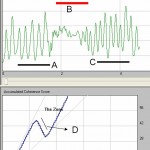3. Brain Training vs. Mental Activity
Highlights from Section 3: Brain Training vs. Mental Activity
- Mental or brain exercise goes beyond mental activity. It is the structured use of cognitive exercises or techniques aimed at improving specific brain functions.
- Mental exercise (or brain training) can be delivered in a number of ways: meditation, cognitive therapy, cognitive training.
- Computerized brain training programs can help get a complete mental workout
In this section we focus on mental exercise “ which we will call brain training, to clearly distinguish it from mental activity in general. First we try to define what brain training is. Then we highlight the different way you can get some brain training. Finally we focus on brain training software programs.
|
|
What is mental exercise or brain training?Mental activity takes place whenever one is awake, ranging from merely day dreaming to reading a book or learning a new language. Mental exercise or brain training refers to the structured use of cognitive exercises or techniques. Its aim is to improve specific brain functions. Keep reading. |
|
|
Different types of brain trainingCognitive therapy (CT) is based on the idea that the way people perceive their experience influences their behaviors and emotions. Meditation has been shown to improve specific cognitive functions such as attention. Biofeedback hardware devices measure and graphically display various physiological variables such as skin conductivity and heart rate variability, so that users can learn to self-adjust. Things are changing as a variety of commercial programs is now making brain training available to the public. Keep reading. |
|
|
Cognitive therapy as brain trainingCognitive therapy (CT) was founded by Dr. Aaron Beck. It is based on the idea that the way people perceive their experience influences their behaviors and emotions. The therapist teaches the patient cognitive and behavioral skills to modify his or her dysfunctional thinking and actions. Keep reading. |
|
|
Meditation as brain trainingYou may be wondering what meditation has to do with brain training. In fact, meditation has been shown to improve specific cognitive functions such as attention. As such it can be considered as a brain training technique. Keep reading. |
|
|
Biofeedback as brain trainingBiofeedback hardware devices measure and graphically display various physiological variables such as skin conductivity and heart rate variability, so that users can learn to self-adjust. It has been used for decades in medicine. Recently, this technology has emerged in reasonably-priced applications for consumers who want to learn how to manage stress better. Keep reading. |
 |
Computerized cognitive training as brain trainingFor many years, neuropsychologists have helped individuals suffering from traumatic brain injuries relearn how to talk, walk or make decisions, etc. Among other tools, cognitive exercises (including computer-assisted strategies) have been used to retrain abilities. Things are changing as a variety of commercial programs is now making brain training available to the public. The challenge is to make informed decisions on which tools may be appropriate for specific needs and goals. Keep reading. |
|
|
Brief history of brain training softwareStructured sets of brain exercises designed to train specific brain areas and functions have been used by the military and by clinical neuropsychologists for a long time. What is happening now is that this approach is being repackaged and commercialized for new and wider audiences. Keep reading. |
 |
Do brain training software programs and “brain games” work?To determine if something works we first need to define what we mean by work. A machine to train abdominal muscles probably won’t work if what we measure is blood pressure. In the same way, a program training auditory processing speed may not work if visual functions are measured for a better understanding of cognitive abilities. Keep reading. |
 |
The need for better education and standardsBrain training is now a household expression for many families, courtesy of Nintendo. What is less visible than Nintendo’s success is the growing number of science-based companies that aim to train specific cognitive skills. Posit Science has been getting increasing levels of attention, including a PBS Special. Keep reading. |
Keep learning by reading more articles in the Resources section, and also please consider joining our free monthly Brain Fitness eNewsletter
This new online resource is based on the content from the book The SharpBrains Guide to Brain Fitness (May 2009, $19.95), by Alvaro Fernandez and Dr. Elkhonon Goldberg.





